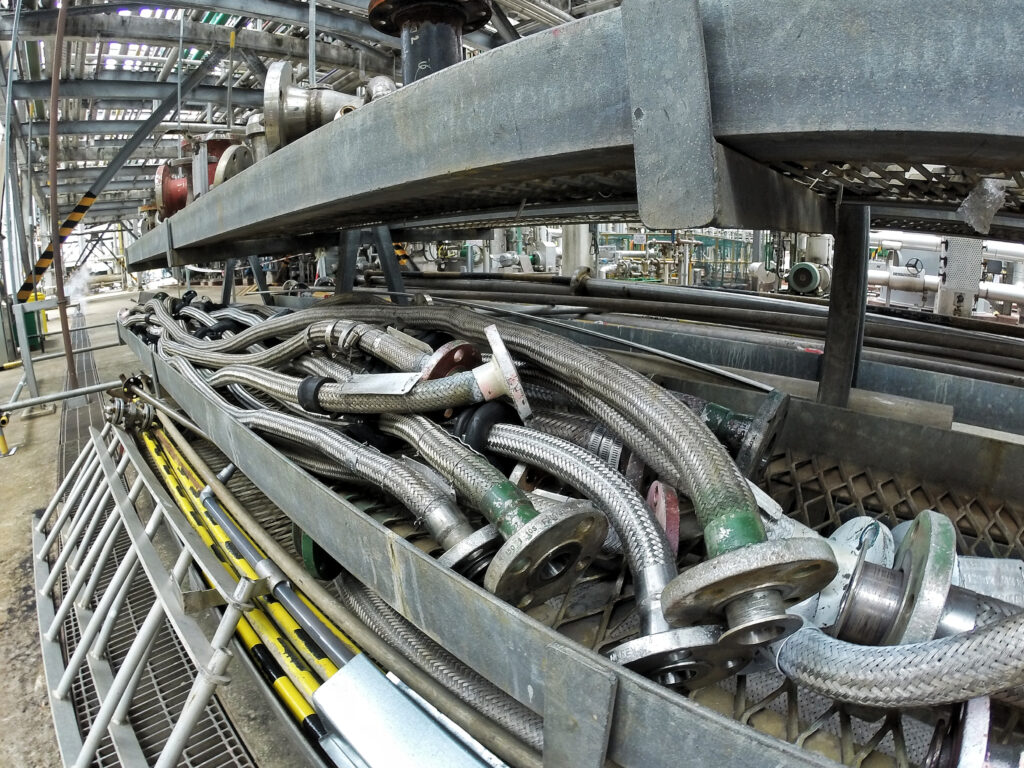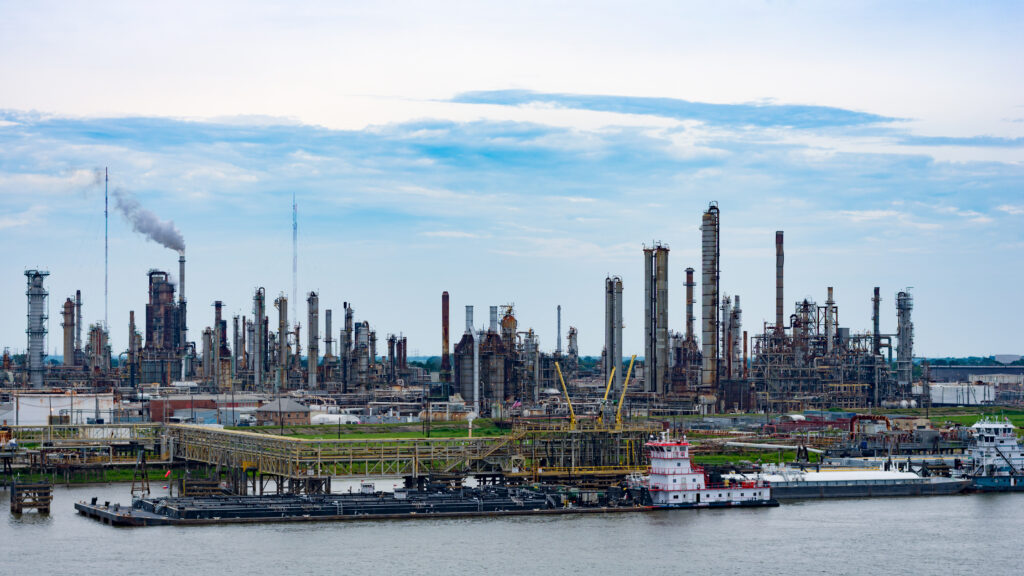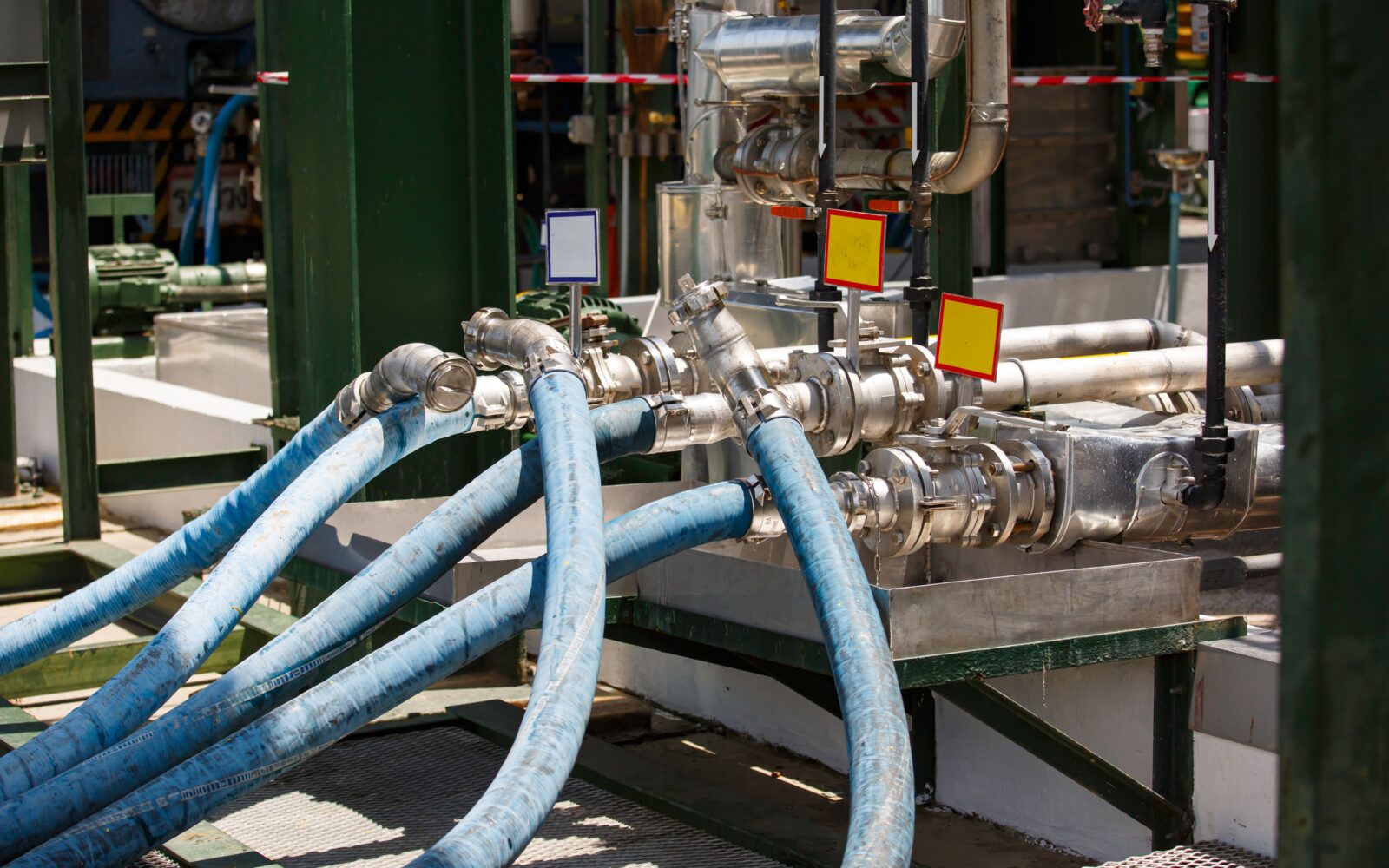Selecting the correct chemical-resistant hose is crucial for maintaining safe and efficient industrial processes. The right hose will withstand exposure to various chemicals, temperatures, and pressures to ensure durability and reliability. Some common questions arise when selecting a hose for the application, these can help guide your selection process.

What Are the Key Factors in Choosing a Chemical Hose?
When selecting a chemical-resistant hose, consider the following:
Material Compatibility: Hoses can be made from PTFE, rubber, stainless steel, or composite materials. Ensure the hose material is compatible with the chemicals being transported.
Temperature Resistance: Verify that the hose can handle the temperature range of your application without degrading. High Temperatures can also reduce the operating pressure of the hose so check temperature derating charts.
Pressure Rating: The hose must accommodate the operating and burst pressures safely.
Flexibility & Bend Radius: Consider how easily the hose can be maneuvered without kinking or reducing flow. Maxing out the hose bend radius in installation can lead to premature hose failures.
Conductivity: If static electricity buildup is a concern, choose a hose with conductive properties to prevent potential hazards. Ensure that hose assembly work order instructions include grounding hose to metal fittings.
Size & Length: Ensure the hose diameter and length are appropriate for your system.

What Are Common Mistakes When Selecting a Chemical Hose?
Ignoring Chemical Compatibility: Not all hoses can handle all chemicals. Check compatibility charts before purchasing.
Overlooking Temperature Limits: A hose that cannot tolerate high or low temperatures may fail prematurely and working system pressures that are lower because of the high temperatures.
Using the Wrong Pressure Rating: A hose rated for lower pressure than needed can rupture, leading to safety risks.
Neglecting Regular Inspections: Routine inspections for wear, leaks, and degradation help prevent failures. Check out our OnGuardTM hose management systems to protect both your team and your assets with a cadence of hose management.
How Can You Extend the Lifespan of a Chemical Hose?
Regular Inspections: Check for cracks, bulges, or leaks to catch issues early.
Proper Storage: Keep hoses away from direct sunlight, extreme temperatures, and chemical exposure when not in use.
Correct Installation: Avoid excessive bending or twisting that can weaken the hose over time.
Flushing & Cleaning: Regularly clean the hose to prevent chemical buildup and contamination.
Where Can You Find the Best Chemical Hose for Your Needs?
Choosing the right chemical-resistant hose ensures safety, efficiency, and cost savings. To explore options suited to your application, contact one of our hose experts today.








